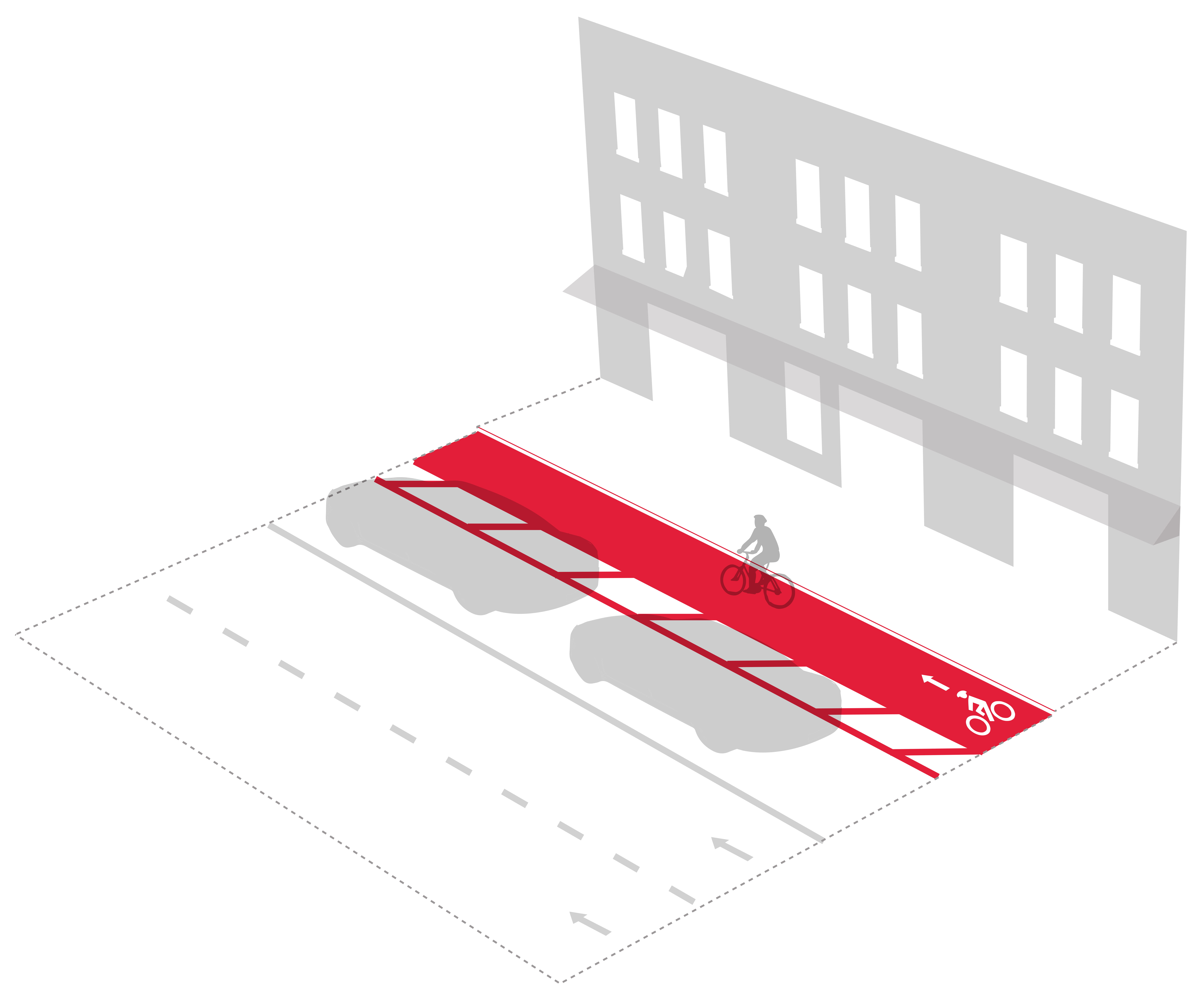Usage: Wide
A bike lane with a physical separation from motorized vehicle traffic by a parking lane or barrier. Physical separation of bikeways is preferable on wide or busy streets, on major bike routes, or along long, uninterrupted stretches. Separation can take the form of floating parking, a curb or raised median, or other vertical elements preventing motor vehicles from accessing the bikeway.


6th Avenue, Manhattan

1st Avenue, Manhattan
Benefits
See benefits of Conventional Bike Lane
- Offers greater cyclist separation from motor vehicle traffic on mid-block sections
- Reduces risk of “dooring” (a motor-vehicle occupant opening their door into the path of an oncoming cyclist)
- Reduces or eliminates blocking of the bike lane by motor vehicles and the swerving of cyclists into mixed traffic
- Encourages novice and less confident cyclists to choose cycling
Considerations
- Design consideration must be given to pedestrians with vision or ambulatory disabilities; emergency-vehicle and paratransit access to adjacent buildings; snow-clearing and street-sweeping needs; commercial vehicles loading and unloading; bicycling visibility at intersections; and establishment of right of way
Application
See application guidance for Conventional Bike Lane
- Where the street is an important bike network connection, or a truck route, or has high motor vehicle volumes, high speeds, or multiple moving lanes
- Consider wherever a conventional bike lane is appropriate.
Design
- Care must be given to the design of bike lanes at intersections and driveways to maintain visibility of cyclists to motorists and to reduce the risk of turning conflicts with motor vehicles
- Designs to mitigate turning conflict at intersections may utilize mixing zones, signal-protected turns, or offset crossings
- In some circumstances (e.g., long paths along open space or waterfront), facilities can be designed for shared use by cyclists, pedestrians, skaters, users with mobility devices, and other non-motorized users (a “shared-use” facility) rather than as a separate bike lane and sidewalk
- If designed as a shared-use facility, provide adequate space appropriate to anticipated volumes of low-speed users (pedestrians) and higher-speed users (cyclists) so as to provide safe and comfortable accommodation of both and minimize conflicts
- Design raised medians that separate bike lanes according to the Raised Median section
- If a protected bike lane uses raised medians, see Raised Median (Curb Height) or Raised Median (12-24 Inches) in the Landscape chapter for information on planting
Bike Lane table [PDF]
See the Bike Lane table [PDF] for a listing of typical bikeway designs and their respective spatial requirements, ideal applications, and advantages and disadvantages.

One-way bike path separated from roadway by parking: Skillman Avenue, Queens



